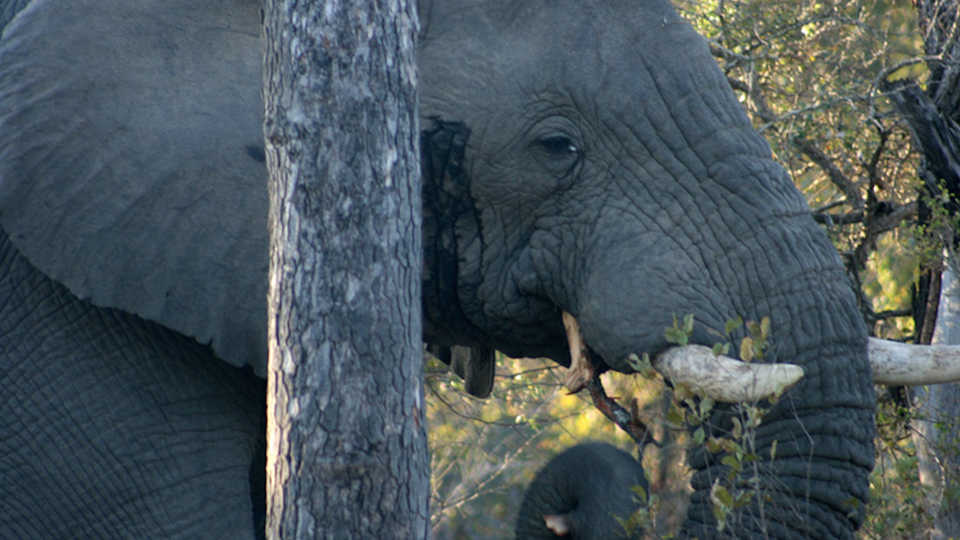Science News
Large Mammal Loss

A new study, published today in the Proceedings of the National Academy of Sciences, has determined that significant ecosystem changes occur when large mammals go extinct. But, lead author Anthony Barnosky of UC Berkeley says, it all “depends on what the animal does for a living.”
Looking at the historical record to determine what would happen if herbivorous elephants, wildebeests, and elk went extinct today, scientists found that which animals and where they live matter when predicting large-scale habitat effects.
“It’s not a simple story, where if you pull out a big beast you see major changes in the landscape,” Barnosky says. “It’s actually dependent on how big a beast you pull out, and also how that beast interacts with the plants and animals in the area, and what other plants and animals are there.”
The team investigated the ecosystem impacts of large animal, or megafauna, extinctions in the Americas since humans moved in from Siberia about 15,000 years ago. They found long-lasting changes in the local landscape after the largest of the land animals—among them mammoths and mastodons—disappeared. About 60 large mammal species died out in North America about 12,000 years ago, probably due to a combination of hunting and changing climate. In addition to mammoths and mastodons, horses, elk, moose and carnivores such as the saber tooth cat and the dire wolf disappeared.
In three areas of North America—northwestern and northeastern America, plus Alaska and the Yukon—fossils showed not only a change in plant communities with an increase in fire frequency, but also a decrease in diversity of small mammals. On the other side of the hemisphere, it took longer for South American species to go extinct, but the continent eventually lost about 66 species, including llamas, vicunas, horses, panthers, giant ground sloths and mastodon relatives called gomphotheres. Many of these losses had little effect on the vegetation of Patagonia and the Pampas there.
Large browsers like mammoths, mastodons, and today’s elephants eat small trees and shrubs and uproot or break down trees, in addition to trampling and churning the soil. Other large herbivores, such as bison and moose, also keep shrubs in check and change soil structure and nutrients as they feed, defecate, and urinate. As a result, such large-bodied plant eaters play a key role in keeping forests from overrunning grasslands, as the group found happened in North America.
“You see the impact of defaunation today in Africa, where the removal of elephant populations has led to these shrubby, scraggly acacias filling the savanna landscape,” says co-author Charles Marshall, director of the UC Museum of Paleontology. “Africa today, with its elephant populations, seems to fit the model of North America with its mammoths and mastodons.”
“Ecological studies have shown that if you pull out a top predator or a key herbivore today, you get dramatic change in the ecosystem,” Barnosky says. “Our study makes it clear that in the past, such changes have lasted for thousands of years. These extinctions really do permanently change the dynamics. You can’t go back.
“If we lose some of these big-bodied animals that are threatened with extinction today, we lose a lot more than those animals, we lose the entire ecosystems of which they are part,” he concludes. “We are moving into new territory in terms of what the planet will look like.”
Image: Anthony Barnosky